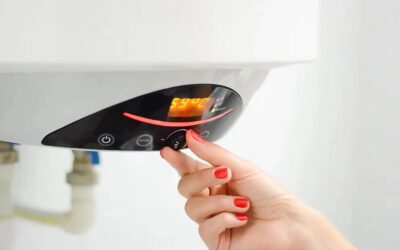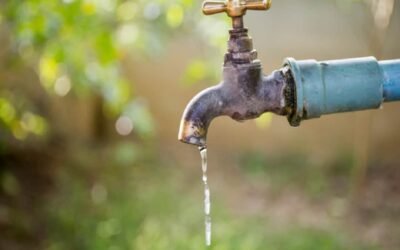Here we will give you ten tips to stop your pipes from freezing.
1: Make Sure Pipes Are Properly Insulated
Insulate pipes not heated in your homes, like your garage, attic, and basement, particularly in your plumbing system. It is possible to avoid freezing pipes by investing in pipe insulation specifically explicitly designed for this use. Pipe insulation is typically very cost-effective when compared to the cost of repairing a line with burst pipes.
Polyethylene, fiberglass, and foam are the most commonly used materials for insulating pipes. A temporary solution to temporary insulation in cold winter can get created using duct tape and rolled-up newspaper.
2: Make Sure That the Garage Doors Get Shut
The garage’s doors should be closed. It will prevent pipes from being safe from frost. Garages typically contain high levels of concrete with smooth surfaces, making them extremely cold. When water lines pass into the garage area, it is crucial. The garage is sufficiently cold without allowing in more frigid air, which will lower the garage’s overall temperature. The water supply lines inside the garage may freeze if the garage door is left open, and it’s a catastrophe waiting to occur.
3: Keep Cabinets Open
Suppose the forecast calls for a cold and chilly night. To keep your plumbing warm, you should regularly open your kitchen and bathroom cabinets. Heating the air can prevent the formation of ice, which could result in pressure building up within the pipes. Opening the cupboards before you go to bed is recommended, so the lines remain free of obstruction and get warmth from the space. Remove cleaning products containing harmful chemicals if you have children or curious pets.
4: Let Faucets Let the Water Drip
It is possible to prevent the freeze of your pipes simply by ensuring the faucet is on. The process of turning on each faucet at your home isn’t required. It is essential first to determine the ones fed by exposed pipes. If it is freezing, you should keep these faucets open. Standing water gets more internally forced than running water and even a tiny trickle.
A tiny portion of the heat gets generated from moving water due to friction created by its constant moving making it harder to cause running water to stop freezing. The best way to prevent ice buildup within your pipes is by permitting a couple of faucets in your home to continue running.
Hot and cold water lines must get kept slightly running to ensure that pressure does not build up in one but not in the other. The running water helps relieve pressure buildup inside cold pipes much more than friction and heat created by the movement of water. Even if the water in pipes is frozen, it will keep the lines from bursting.
5: Maintain a Consistent Temperature
A constant temperature during the day as well as at night is a way to keep ice from forming. At the same time, many homeowners turn down their thermostats in the evening to save money on heating. This strategy can backfire as the burst pipes are much more costly than an additional few dollars of energy for heating.
Maintain the temperature in your home as consistently as possible during and at night. Avoid sudden changes in the temperature of your house to avoid your pipes becoming a mess.
6: Repair and Seal Openings and Cracks
Check your home for cracks, holes, or gaps before the winter months so that drafts don’t result in your systems freezing. Check for damages that could occur around windows or doors or any holes in your floors or walls where cable wires get located like those used for TVs, Wi-Fi, or cables.
Fill holes in the sill plates where your home rests on the foundation. For exterior and interior walls, seal gaps and cracks around the pipes. It will also keep the accumulation of ice inside your house and boost insulation.
7: Make Sure You Turn Off the Heating
In winter, turning on your heater while you’re away from home is advised, especially if you’re planning to be gone for a long time. Turning off your heating while the house is not in use could be counterintuitive. The lower temperatures of your home could reduce your heating costs. Still, when cold temperatures are a factor, your pipes can get frozen and explode. To ensure that your lines are secure, it is not necessary to be keeping your house warm. Temperatures between 13 and 18 degrees Celsius are safe.
8: Keep the Doors Inside the Open
All your doors in your interior should be open to ensure a constant temperature inside your home. Pipes in your home get typically located in the kitchen and bathroom cabinets, usually in the middle of your home. But the lines in these areas can be susceptible to freezing, and, to a lesser extent, many homes are affected by unbalanced heating distributions. Make sure to open the doors in your interiors to ensure that the heat is evenly and evenly across your house. It is an excellent technique during colder weather since it facilitates the circulation of warmer air throughout the rooms.
9: Crawl Spaces Need to Be Secured
Your crawl spaces that get ventilated could require temporary cover in winter when it is incredibly bitter. The insulation in your crawl space can decrease the quantity of cold air in the area around your pipes. You can seal off your crawl space with foam pieces cut to the dimensions of the ventilation. Using duct tape, you can hold them in place, and you’ll have a low-cost and easy method to keep warm throughout winter.
10: Make Use of the Heating Tape
Depending on the requirements of your property, the best option is to choose the self-monitoring system or heating tape that is manually heated. Heating tapes with electrical energy can be applied directly onto the pipe that is accessible to allow it to hold the heat. It is essential for lines that are not heated or outdoor areas, like basements and attics.
The sensor in one type of tape will detect when required to increase the pipe’s temperature and turn it off. It is necessary to connect the manual heating tape at any time you need heating and then remove it once the line is warmed up. Using electrical heating tape is risky but just like any other heating device. For example, when applying it to your pipes, ensure you adhere to the manufacturer’s instructions.
However you prepare your pipes in the winter, a brutal cold snap could cause pipes to freeze and even burst. Despite all your efforts and preparations, it’s more often than not that a leaky water system can cause severe and costly damage.
Call Ottawa Plumbing Service immediately if you are experiencing severe plumbing issues or require assistance with frozen pipes repair in Ottawa. You are more likely to have the problem solved before significant damage occurs if you contact us as soon as possible.
For more information about plumbing problems, call Ottawa Plumbing Service at (613) 317-1682 or email at info@ottawaplumbingservice.com.



